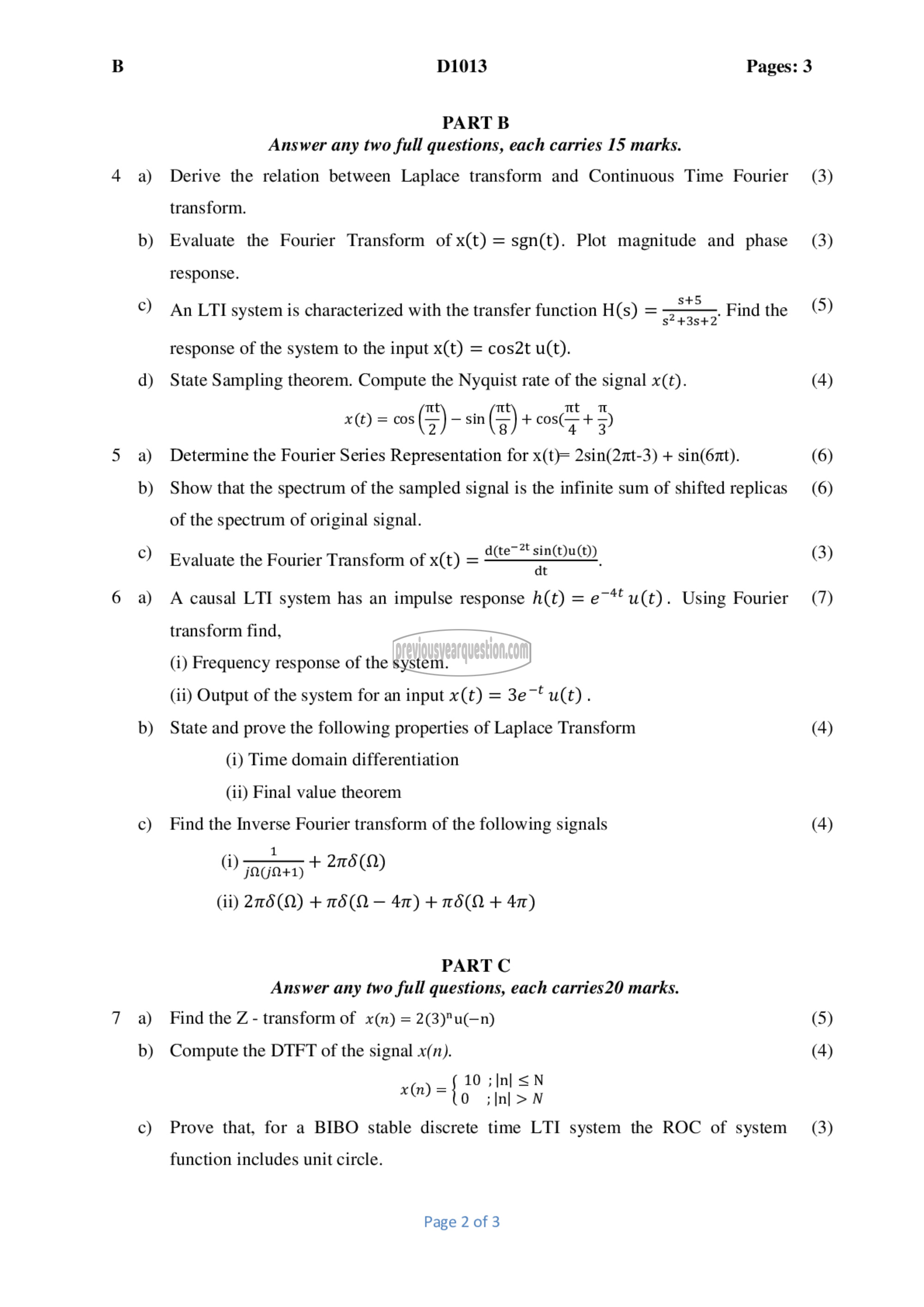APJ ABDUL KALAM TECHNOLOGICAL UNIVERSITY Previous Years Question Paper & Answer
Semester : SEMESTER 4
Subject : Signals & Systems
Year : 2019
Term : MAY
Scheme : 2015 Full Time
Course Code : EC 202
Page:2
a)
b)
0)
6)
a)
b)
0)
ಖ
0)
0)
0)
0)
11013 Pages: 3
PART تا
Answer any two full questions, each carries 15 marks.
Derive the relation between Laplace transform and Continuous Time Fourier
transform.
Evaluate the Fourier Transform of x(t) = sgn(t). Plot magnitude and phase
response.
T ⋅ ⋅ ⋅ ⋅ 5+5 [ग
An LTI system is characterized with the transfer function H(s) = न्त ind the
response of the system to the input x(t) = cos2t u(t).
State Sampling theorem. Compute the Nyquist rate of the signal x(t).
x(t) = cos (5) — sin (=) + cos + ड)
Determine the Fourier Series Representation for x(t)}= 2sin(2zt-3) + sin(6zt).
Show that the spectrum of the sampled signal is the infinite sum of shifted replicas
of the spectrum of original signal.
d(te~2" sin(t)u(t))
Evaluate the Fourier Transform of x(t) = न
4८ u(t). Using Fourier
A causal LTI system has an impulse response h(t) = 07
transform find,
(i) Frequency response of the system.
(ii) Output of the system for an input x(t) = 3९ ८ u(t).
State and prove the following properties of Laplace Transform
(i) Time domain differentiation
(ii) Final value theorem
Find the Inverse Fourier transform of the following signals
(i)
(ii) 276 (0) + 766೧ — 47೫) + 76(೧ + 47೫)
1
1೧(1೧--1)
+ 276 (0)
PART C
Answer any two full questions, each carries20 marks.
Find the Z - transform of x(n) = 2(3)"u(—n)
Compute the DTFT of the signal x(n).
_ (10 ; ॥| ۷
५०४) = [0 ; [| > ۷
Prove that, for a BIBO stable discrete time LTI system the ROC of system
function includes unit circle.
Page 2 of 3
(3)
(3)
(5)
(4)
(6)
(6)
(3)
(7)
(4)
(4)
(5)
(4)
(3)
